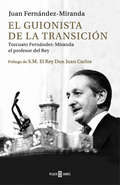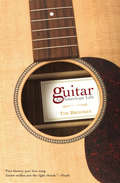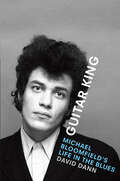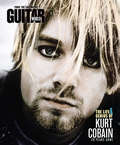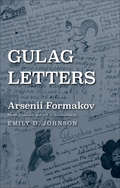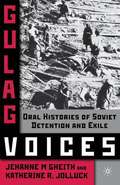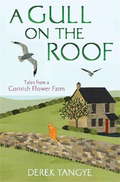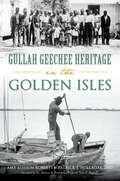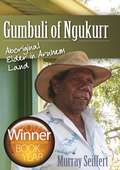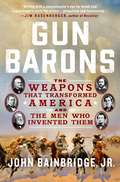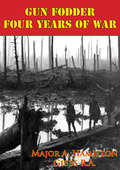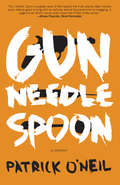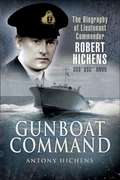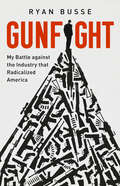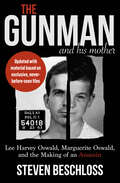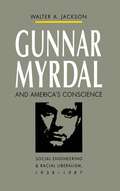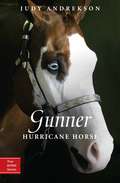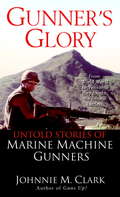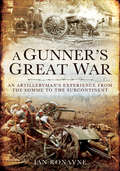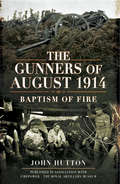- Table View
- List View
El guionista de la Transición: Torcuato Fernández-Miranda, el profesor del Rey
by Juan Fernández-MirandaLa primera biografía dedicada a Torcuato Fernández-Miranda, figura imprescindible de la Transición Una de las definiciones más acertadas que se han hecho de la Transición es aquella popularizada por Rodolfo Martín Villa en la que se la describe como un montaje teatral en el que «el Rey fue el empresario, Torcuato Fernández-Miranda el guionista y Adolfo Suárez el actor que interpretaba el guion escrito por Torcuato». Si bien son muchos los libros dedicados a las figuras del empresario y el actor, resulta sorprendente saber que no existe una sola biografía dedicada al guionista, por lo que este libro viene a llenar un injusto silencio acerca de otro protagonista esencial de este reparto: Torcuato Fernández-Miranda. Suya fue la responsabilidad de educar al joven príncipe desde 1960 y de diseñar un plan que le condujera a la corona, sorteando los obstáculos que en su camino sembraban los fieles del búnker franquista; suya fue la Presidencia del gobierno en los decisivos días que siguieron al asesinato de Carrero Blanco y que pudieron dar al traste con la hoja de ruta prevista para la llegada de la democracia; suya fue la decisión de renunciar a su mayor ambición política, ser presidente del Gobierno, al considerar que sería más valioso para los planes del Rey desde la presidencia de las Cortes; suya fue la astuta maniobra que logró la terna de candidatos que llevó a Suárez a la presidencia del Gobierno, y que, en sus propias palabras, incluía «lo que el Rey me ha pedido»; y por último, suya fue también la redacción de la ley fundamental que entregó a Suárez diciéndole «aquí tienes esto, que no tiene padre», y que se convirtió en la pieza definitiva para conseguir el desmantelamiento del Régimen franquista sin provocar un nuevo enfrentamiento civil. Como atractivo adicional, este libro está prologado por S. M. el Rey Don Juan Carlos I. Por primera vez el rey emérito escribe un prólogo para un libro, lo que supone un claro gesto de gratitud hacia quien fuera su preceptor y hombre de confianza. Los protagonistas de la época opinan... «A mí la suerte me sonríe a menudo. Tengo el don de atraparla al paso, incluso de provocarla. Pero la suerte tiene toda clase de rostros. La mía ha consistido en tener siempre a mi lado al hombre que hacía falta en las situaciones delicadas. Sin duda Torcuato ha sido uno de esos hombres.» Juan Carlos I «Torcuato Fernández-Miranda fue el político más relevante del siglo XX.» Adolfo Suárez «La transición tuvo, sin duda, una gran fortuna: contar con las personas adecuadas en el momento apropiado. Una de ellas, y fundamental, fue Torcuato. También procedente del régimen anterior, esa circunstancia fue superada por sus capacidades: la técnica, el conocimiento de las claves del Estado, el saber moverse entre las nieblas de la política, una extraordinaria imaginación, un sutil dominio de las voluntades, una formación jurídica extraordinaria y una posición de confianza al lado de Su Majestad el Rey.» Fernando Ónega «Fue Fernández-Miranda el estadista que se sirvió del arrojo -a veces temerario- de Adolfo Suárez para ese brinco aparentemente imposible que consistió en transitar de una dictadura a una democracia.» José Antonio Zarzalejos
Guitar: An American Life
by Tim BrookesFrom humble folk instrument to American icon, the story of the guitar is told in this “exceptionally well-written” memoir by the NPR commentator (Guitar Player). In this blend of personal memoir and cultural history, National Public Radio commentator Tim Brookes narrates the long and winding history of the guitar in the United States as he recounts his own quest to build the perfect instrument. Pairing up with a master artisan from the Green Mountains of Vermont, Brookes learns how a perfect piece of cherry wood is hued, dovetailed, and worked on with saws, rasps, and files. He also discovers how the guitar first arrived in America with the conquistadors before being taken up by an extraordinary variety of hands: miners and society ladies, lumberjacks and presidents’ wives. In time, the guitar became America’s vehicle of self-expression. Nearly every immigrant group has appropriated it to tell their story. “Part history, part love song, Guitar strikes just the right chords.” —Andrew Abrahams, People
Guitar King: Michael Bloomfield's Life in the Blues
by David DannA Rolling Stone Best Music Book of 2019, this biography of blues-rock legend Mike Bloomfield &“draws you in the way a novel does&” (The Wall Street Journal). Named one of the world&’s great blues-rock guitarists by Rolling Stone, Mike Bloomfield remains beloved by fans forty years after his untimely death. Taking readers backstage, onstage, and into the recording studio with this legendary virtuoso, David Dann tells the riveting stories behind Bloomfield&’s work in the seminal Paul Butterfield Blues Band and the mesmerizing Electric Flag, as well as on the Super Session album with Al Kooper and Stephen Stills, Bob Dylan&’s Highway 61 Revisited, and soundtrack work with Peter Fonda and Jack Nicholson. Drawing from meticulous research, including more than seventy interviews with the musician&’s friends, relatives, and band members, music historian David Dann brings to life Bloomfield&’s worlds, from his struggles to fit in on Chicago&’s wealthy North Shore with his Jewish family to the gritty taverns and raucous nightclubs where this self-taught guitarist helped transform the sound of contemporary blues and rock music. With scenes that are as electrifying as Bloomfield&’s solos, this is the story of a life lived at full volume. &“Feels like one of the last great untold classic-rock tales, right up through Bloomfield&’s mysterious passing.&” ―Rolling Stone &“Reveals the depths of Bloomfield's musical passions, genius and personal despair . . . Guitar King establishes his pivotal role in American music history.&” ―Pittsburgh Post-Gazette
Guitar King: Michael Bloomfield's Life in the Blues
by David DannA Rolling Stone Best Music Book of 2019, this biography of blues-rock legend Mike Bloomfield &“draws you in the way a novel does&” (The Wall Street Journal). Named one of the world&’s great blues-rock guitarists by Rolling Stone, Mike Bloomfield remains beloved by fans forty years after his untimely death. Taking readers backstage, onstage, and into the recording studio with this legendary virtuoso, David Dann tells the riveting stories behind Bloomfield&’s work in the seminal Paul Butterfield Blues Band and the mesmerizing Electric Flag, as well as on the Super Session album with Al Kooper and Stephen Stills, Bob Dylan&’s Highway 61 Revisited, and soundtrack work with Peter Fonda and Jack Nicholson. Drawing from meticulous research, including more than seventy interviews with the musician&’s friends, relatives, and band members, music historian David Dann brings to life Bloomfield&’s worlds, from his struggles to fit in on Chicago&’s wealthy North Shore with his Jewish family to the gritty taverns and raucous nightclubs where this self-taught guitarist helped transform the sound of contemporary blues and rock music. With scenes that are as electrifying as Bloomfield&’s solos, this is the story of a life lived at full volume. &“Feels like one of the last great untold classic-rock tales, right up through Bloomfield&’s mysterious passing.&” ―Rolling Stone &“Reveals the depths of Bloomfield's musical passions, genius and personal despair . . . Guitar King establishes his pivotal role in American music history.&” ―Pittsburgh Post-Gazette
Guitar World The Life & Genius of Kurt Cobain
by Editors of Guitar WorldKurt Cobain--rock visionary, godfather of grunge, voice of the disaffected--was also a powerful and influential guitarist. From the editors of Guitar World, the #1 guitar magazine, The Life and Genius of Kurt Cobain examines his impact on American music--and why a man who had everything came to the terrible conclusion that he had nothing. Collected here are the stories and interviews exclusively published by Guitar World, chronicling Cobain's dramatic ascent on the Seattle music scene, the making of Nirvana's albums, Cobain's personal demons, and his far-reaching legacy.
Gujarat na Sirchatra Sardar
by Mukulbhai Kalarthi“તમે તમારું સાચું અને મજબૂત સંગઠન ખડું કરો. ઉપરાંત મેં જે નબળાઈઓ ચીંધી છે તે દૂર કરો, આળસ છોડી દો, વહેમો ફગાવી દો, કોઈનો ડર ન રાખો, કુસંપનો ત્યાગ કરો, કાયરતા ખંખેરી નાખો, હિંમત રાખો, બહાદુર બનો અને આત્મવિશ્વાસ રાખતાં શીખો.” “આટલું કરશો તો તમે જે ઇચ્છો છો તે એની મેળે આવી મળશે. જગમાં જેને માટે જે લાયક હોય છે તેને મળે જ છે. આપણી ઉમેદ મોટી છે. આપણે ગુલામીની બેડીઓ તોડી, સ્વતંત્રતા મેળવી રાજસત્તાની લગામ આપણા હાથમાં લેવા માગીએ છીએ. આવી મોટી ઉમેદ રાખવાનો આપણો અધિકાર છે. આવો મોટો અધિકાર પ્રાપ્ત કરવા માટે આપણે ભગીરથ પ્રયત્ન કરવો જોઈએ. પ્રયત્ન કરનારને પ્રભુ મદદ કરે છે. પ્રભુ તમારું ભલું કરો!”
The Gulag Archipelago
by Alexander SolzhenitsynThis combines history, autobiography, documentary and political analysis as it examines the Soviet apparatus of repression from its inception following the October Revolution of 1917.
Gulag Letters
by Arsenii Formakov Emily D. JohnsonA poignant collection of letters written by the Latvian poet, novelist, and newspaper editor Arsenii Formakov while interned in Soviet labor camps Emily Johnson has translated and edited a fascinating collection of letters written by Arsenii Formakov, a Latvian Russian poet, novelist, and journalist, during two terms in Soviet labor camps, 1940 to 1947 in Kraslag and 1949 to 1955 in Kamyshlag and Ozerlag. This correspondence, which Formakov mailed home to his family in Riga, provides readers with a firsthand account of the workings of the Soviet penal system and testifies to the hardships of daily life for Latvian prisoners in the Gulag.
Gulag Voices
by Jehanne M Gheith Katherine R. JolluckIn this volume, the powerful voices of Gulag survivors become accessible to English-speaking audiences for the first time through oral histories, rather than written memoirs. It brings together interviews with men and women, members of the working class and intelligentsia, people who live in the major cities and those from the "provinces," and from an array of corrective hard labor camps and prisons across the former Soviet Union. Its aims are threefold: 1) to give a sense of the range of the Gulag experience and its consequences for Russian society; 2) to make the Gulag relevant to English-speaking readers by offering comparisons to historical catastrophes they are likely to know more about, such as the Holocaust; and 3) to discuss issues of oral history and memory in the cultural context of Soviet and post-Soviet society.
A Gull on the Roof: Tales from a Cornish Flower Farm (Minack Chronicles #5)
by Derek TangyeThe first title in the Minack Chronicles, which tell the story of how Derek and his wife Jeannie left behind their London home to establish a flower farm on the coast of Cornwall. From inauspicious beginnings, this book includes tales of the couple's first animals, including Monty the ginger cat, and takes us through trials and tribulations until the arrival of a gull on the roof provides the first augury of better times to come.
Gullah Geechee Heritage in the Golden Isles (American Heritage)
by Amy Lotson Roberts Patrick J. Holladay PhDThe Golden Isles are home to a long and proud African American and Gullah Geechee heritage. Ibo Landing was the site of a mass suicide in protest of slavery, the slave ship Wanderer landed on Jekyll Island and, thanks to preservation efforts, the Historic Harrington School still stands on St. Simons Island. From the Selden Normal and Industrial Institute to the tabby cabins of Hamilton Plantation, authors Amy Roberts and Patrick Holladay explore the rich history of the region's islands and their people, including such local notables as Deaconess Alexander, Jim Brown, Neptune Small, Hazel Floyd and the Georgia Sea Island Singers.
Gum-Dipped: A Daughter Remembers Rubber Town (Ohio History and Culture Series)
by Joyce DyerGum-Dipped: A Daughter Remembers Rubber Town tells the story of growing up in the rubber community of Firestone Park in Akron, Ohio, the former Rubber Capital of the World. <p><p>The book begins with the rededication of the bronze Harvey Firestone statue on August 3, 2000, at the Centennial celebration for the Firestone Tire & Rubber Company. The statue, perched high on a hill at the entrance to Firestone Park, the residential community Harvey built for his workers in 1915, was sacred to the author, Joyce Coyne Dyer, and her father, Tom Coyne, during the fifties, a time when the Coynes worshipped the company and thought themselves members of the Firestone family.
Gumbuli of Ngukurr: Aboriginal elder in Arnhem Land
by Murray SeiffertTwo stories overlap and interweave in this biography of Gumbuli of Ngukurr. One is of a remarkable Aboriginal elder, Michael Gumbuli Wurramara, whose early life was spent on remote islands in the Gulf of Carpentaria. As a teenager, he moved to the historic Roper River Mission, which became known as Ngukurr when the government took over its control. Gumbuli was one of the community leaders who fought hard to achieve local decision-making at this time of dramatic change. Later he became the first Aboriginal Anglican priest in the Northern Territory and for over 30 years, leader of the Arnhem Land Anglicans and 'architect' of the Kriol Bible Translation Project. He faced many of the challenging issues arising from traditional Aboriginal ways meeting Western culture and the Christian faith. The second story describes the Ngukurr community in the second half of the twentieth century, as it seeks to achieve a mix of ancient and modern cultures. Along the way, issues arise such as health, employment, economics, welfare, Stolen Generation, polygamy, alcohol and Aboriginal spirituality. The plea of 'Why don't you ask us?' seems to fall on deaf ears in each generation. Extremely readable and thought-provoking, this work is based on extensive interviews, observation and archival research. It challenges many assumptions about the relationships between government, missions and Aborigines. A collection of photographs, many of historical importance, accompanies the text.
Gun Barons: The Weapons That Transformed America and the Men Who Invented Them
by John Bainbridge Jr.John Bainbridge, Jr.'s Gun Barons is a narrative history of six charismatic and idiosyncratic men who changed the course of American history through the invention and refinement of repeating weapons.Love them or hate them, guns are woven deeply into the American soul. Names like Colt, Smith & Wesson, Winchester, and Remington are legendary. Yet few people are aware of the roles these men played at a crucial time in United States history, from westward expansion in the 1840s, through the Civil War, and into the dawn of the Gilded Age. Through personal drive and fueled by bloodshed, they helped propel the young country into the forefront of the world's industrial powers.Their creations helped save a nation divided, while planting seeds that would divide the country again a century later. Their inventions embodied an intoxicating thread of American individualism—part fiction, part reality—that remains the foundation of modern gun culture. They promoted guns not only for the soldier, but for the Everyman, and also made themselves wealthy beyond their most fevered dreams.Gun Barons captures how their bold inventiveness dwelled in the psyche of an entire people, not just in the minds of men who made firearm fortunes. Whether we revere these larger-than-life men or vilify them, they helped forge the American character.
Gun Fodder - Four Years Of War [Illustrated Edition]
by Major A. Hamilton Gibbs R.A.Includes the First World War Illustrations Pack - 73 battle plans and diagrams and 198 photosMemoirs of an officer, brother of the war correspondent, Philip Gibbs, who enlisted as a trooper in 9th Lancers, was commissioned into the Royal Artillery at the end of 1914, then served in Salonika and on the Western front.
Gun, Needle, Spoon
by Patrick O'NeilThis memoir follows a punk rock pioneer on his slide into drug abuse and life as an armed robber, all the way through life in recovery and what it's like to look back on those times, knowing all the while that he is still under the threat of three strikes, a twenty-five-to-life prison sentence waiting. He has no choice but to deal with it all drug free.During punk rock's heyday, Patrick O'Neil worked at the San Francisco's legendary Mabuhay Gardens. He went on to become the road manager for Dead Kennedys and Flipper, as well as T.S.O.L. and the Subhumans. He holds an MFA from Antioch University Los Angeles.
Gun Shy: The True Story of the Army Dog Scared of War
by Alison Stokes Angie McDonellVidar, the army search dog, has spent half his life sniffing out enemy weapons and bombs on the front line of the war in Afghanistan. His keen nose saved the lives of hundreds of soldiers, finding roadside bombs which could have killed British troops. But after two years of loyal service, Vidar became ‘Gun Shy’ – a term used to describe dogs who are frightened of loud noises. Whenever he heard bombs exploding or even the sound of helicopters flying above, he would curl up in the corner, shaking with fear.His army days were numbered… and his future looked uncertain. Until Angie, an army medic who befriended him during her tour of Afghanistan, made it her duty to give him a safe haven at her Welsh home.
Gunboat Command: The Biography of Lieutenant Commander Robert Hichens DSO* DSC** RNVR
by Antony HichensThis biography draws heavily on the personal diaries of the subject, Robert Hichens (or Hitch as he was universally known).After a brief description of his early life, time at Oxford, his motor racing achievements (including trophies at Le Mans in his Aston Martin) and RN training, the book focuses on his exceptional wartime experiences. Hitch was the most highly decorated RNVR officer of the war with two DSOs, three DSCs and three Mentions in Despatches. He was recommended for a posthumous VC. We read of his early days in vulnerable minesweepers and the Dunkirk Dynamo operation, (his first DSC).In late 1940 he joined Coastal Forces serving in the very fast MGBs, soon earning his own command and shortly after command of his Flotilla. He was the first to capture an E-Boat. His successful leadership led to many more successes and his reputation as a fearless and dynamic leader remains a legend today.The book contains detailed and graphic accounts of running battles against the more heavily armed E-boats. Tragically he was killed in action in April 1943, having refused promotion and a job ashore.
Gunfight: My Battle Against the Industry that Radicalized America
by Ryan BusseA former firearms executive pulls back the curtain on America's multibillion-dollar gun industry, exposing how it fostered extremism and racism, radicalizing the nation and bringing cultural division to a boiling point. As an avid hunter, outdoorsman, and conservationist–all things that the firearms industry was built on–Ryan Busse chased a childhood dream and built a successful career selling millions of firearms for one of America&’s most popular gun companies.But blinded by the promise of massive profits, the gun industry abandoned its self-imposed decency in favor of hardline conservatism and McCarthyesque internal policing, sowing irreparable division in our politics and society. That drove Busse to do something few other gun executives have done: he's ending his 30-year career in the industry to show us how and why we got here. Gunfight is an insider&’s call-out of a wild, secretive, and critically important industry. It shows us how America's gun industry shifted from prioritizing safety and ethics to one that is addicted to fear, conspiracy, intolerance, and secrecy. It recounts Busse's personal transformation and shows how authoritarianism spreads in the guise of freedom, how voicing one's conscience becomes an act of treason in a culture that demands sameness and loyalty. Gunfight offers a valuable perspective as the nation struggles to choose between armed violence or healing.
The Gunman and His Mother: Lee Harvey Oswald, Marguerite Oswald, and the Making of an Assassin
by Steven BeschlossThis &“groundbreaking&” biography of Lee Harvey Oswald&’s formative years &“provides new insight into the character of the man who murdered a president&” (Michael Takiff, author of A Complicated Man and Brave Men, Gentle Heroes). The narrative of the assassination of President John F. Kennedy has been told from many points of view, most significantly in the wave of books exploring the Warren Commission&’s findings and the conspiracy theories that followed. But for journalist Steven Beschloss, the story of Lee Harvey Oswald began with the troubled bond he had with his mother. Drawing on public records, key interviews with Marguerite Oswald and other family members, and Lee&’s own writing and statements, Beschloss traces the origins of an American tragedy back to the lonely boy who couldn&’t find a way to belong and the unstable mother with a grudge against the world. Often left to his own devices, young Oswald read heavily, skipped school, and hatched plans to make his mark on the world. The Gunman and His Mother reveals the complex parental relationship that turned a boy into a killer responsible for a crime that changed American history. This updated edition, published in time for the sixtieth anniversary of JFK&’s assassination, includes material from never-before-seen files containing Marguerite Oswald&’s personal writings, as well as a series of lawsuits Marguerite brought against various people, including Jimmy Breslin, William Manchester, and Gerald Ford. Not only do these documents complete the portrait of Lee&’s mother, but given her attacks on the media, conspiratorial mindset, and her sense of grievance, their inclusion sheds new light on our current political climate. &“Haunting and compelling . . . reads like a Greek tragedy.&” —Ralph Pezzullo, author of Jawbreaker and Inside SEAL Team Six
Gunnar Myrdal and America's Conscience
by Walter A. JacksonGunnar Myrdal's An American Dilemma (1944) influenced the attitudes of a generation of Americans on the race issue and established Myrdal as a major critic of American politics and culture. Walter Jackson explores how the Swedish Social Democratic scholar, policymaker, and activist came to shape a consensus on one of America's most explosive public issues.
Gunner: Hurricane Horse (True Horse Stories #1)
by Judy AndreksonEach book in the True Horse Stories focuses on a contemporary horse from a different part of the world, and each animal is, in his or her own way, a hero.PBJ Decks Smokin Gun (Gunner) is an American Paint Horse, one of the many of Heather Lott Goodwin's herd, and a valuable show animal that won the World Championship Paint Horse title. When Hurricane Katrina passed over the Goodwin property, it took with it the fences, the cattle, and several horses. Heather and her family lived in their horse trailer for six weeks and considered themselves lucky to have safe, comfortable shelter. After the storm, they searched for the animals and recovered many of them. But three months passed before they located Gunner, a hundred miles away. They were told he was in terrible shape and should be put down. Nevertheless, Heather drove on washed-out roads to bring him home, starving, dehydrated, and blind in one eye. With the help of a vet and her mother, she nursed him back to health. Amazingly, nine months later, he was well enough to compete again in the World Championship Paint Horse Show. Gunner's story is a testament to love and to determination.
Gunner's Glory: Untold Stories of Marine Machine Gunners
by Johnnie ClarkThey were warriors, trained to fight, dedicated to their country, and determined to win. At Guadalcanal, the Marine Corps' machine gunners took everything the Japanese could throw at them in one of the bloodiest battles of World War II; their position was so hopeless that at one point they were given the go-ahead to surrender. Near the Chosin Reservoir in Korea, as the mercury dropped to twenty below, the 1st Marine Division found itself surrounded and cut off by the enemy. The outlook seemed so bleak that many in Washington had privately written off the men. But surrender is not part of a Marine's vocabulary. Gunner's Glorycontains true stories of these and other tough battles in the Pacific, in Korea, and in Vietnam, recounted by the machine gunners who fought them. Bloody, wounded, sometimes barely alive, they stayed with their guns, delivering a stream of firepower that often turned defeat into victory-andalwaysmade them the enemy's first target. From the Paperback edition.
A Gunner's Great War: An Artilleryman's Experience from the Somme to the Subcontinent
by Ian RonayneIf the First World War had not happened when it did, Channel Islander Clarence Ahier would almost certainly have led a mostly unremarkable life. But it did, and in October 1915, aged just 23-years-old, Clarence left his home and volunteered to join the British Army. He would spend the next two and half years serving as an artillery man on the Western Front.Now this in itself is not remarkable—millions of other young men did the same thing. But Clarence Ahier did do something remarkable, and it was something to set him out from almost all his contemporaries. From the very beginning of his time at the front, he wrote a graphic and moving account of his experiences of war.Clarences ultimate plans for his meticulously written journal are unknown. But having lain unnoticed for years, it was recently discovered in a collection of dusty ephemera handed to a local history society.The complete journal consists of around 25,000 words, with a focus on Clarences experience during the Battle of the Somme, in the fighting around Ypres, and, after he was wounded for the second time, the journey to India and his time there as a member of the garrison. This will be supported by additional explanatory text.
The Gunners of August 1914: Baptism of Fire
by John HuttonThe Great War will always be synonymous with trench warfare and the mass slaughter inflicted by machine guns on the helpless but gallant infantry. There is a good reason for this view as the machine guns took a terrible toll, and the infantry's experiences continue to fascinate and appal people today. But one aspect of the fighting that gets insufficient attention is the artillery. Histories of the major battles often reduce the role of the big guns to a few paragraphs, and this has created a seriously distorted impression of the reality of the fighting. A better balance needs to be struck, and that is the intention of John Hutton's new book on the gunners of 1914.He tells the story of the war as the gunners themselves saw it, focusing on the first few months of warfare which were fundamental to the conduct of the campaign. The gunners may not have always shared the trench experiences of the infantry in the front line, but they were in the thick of the action, and success or failure depended on them. The personal testimonies of those who served with and supported the guns provide a vital insight into the colossal tragedy and drama of the war from the artilleryman's point of view.
